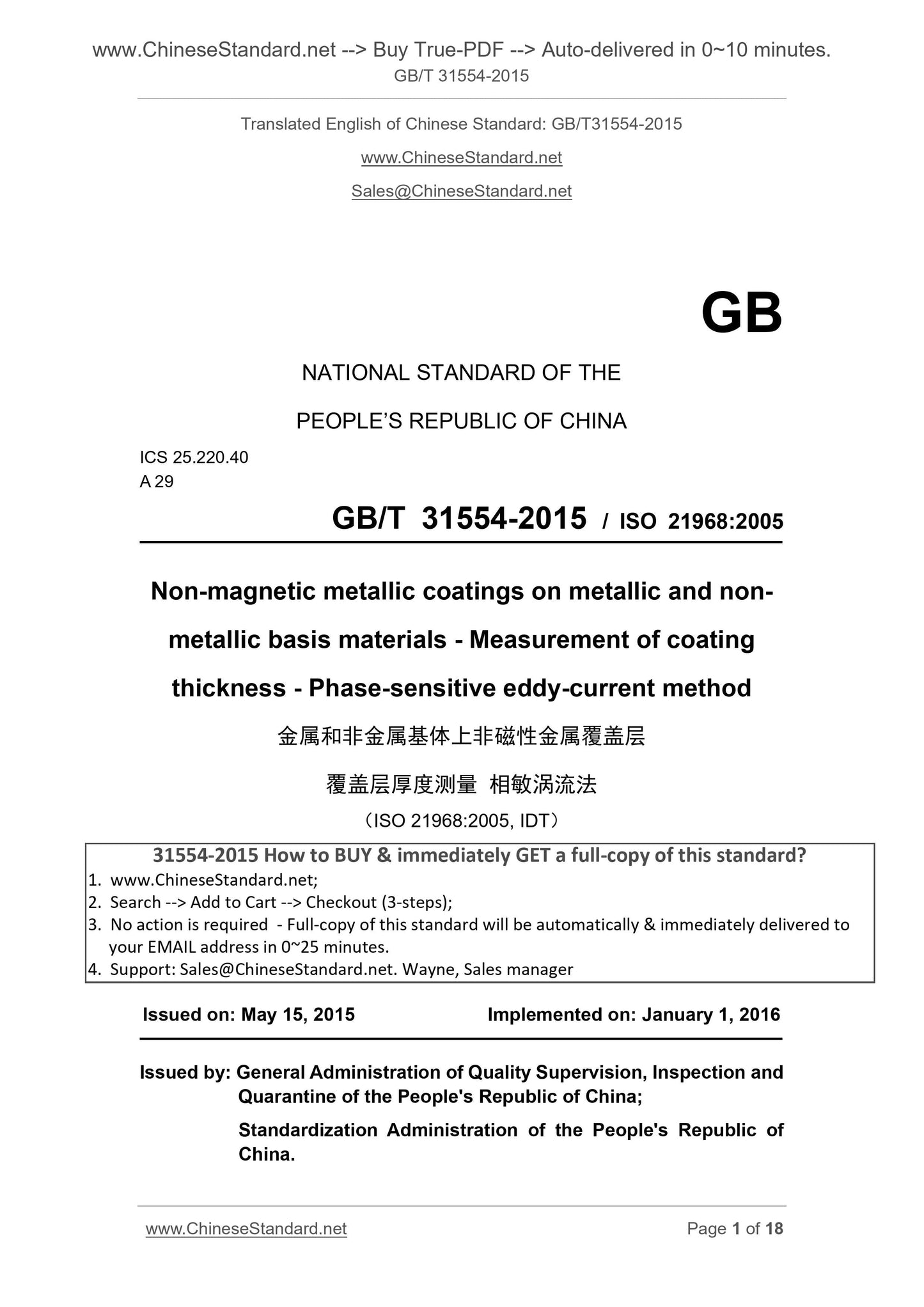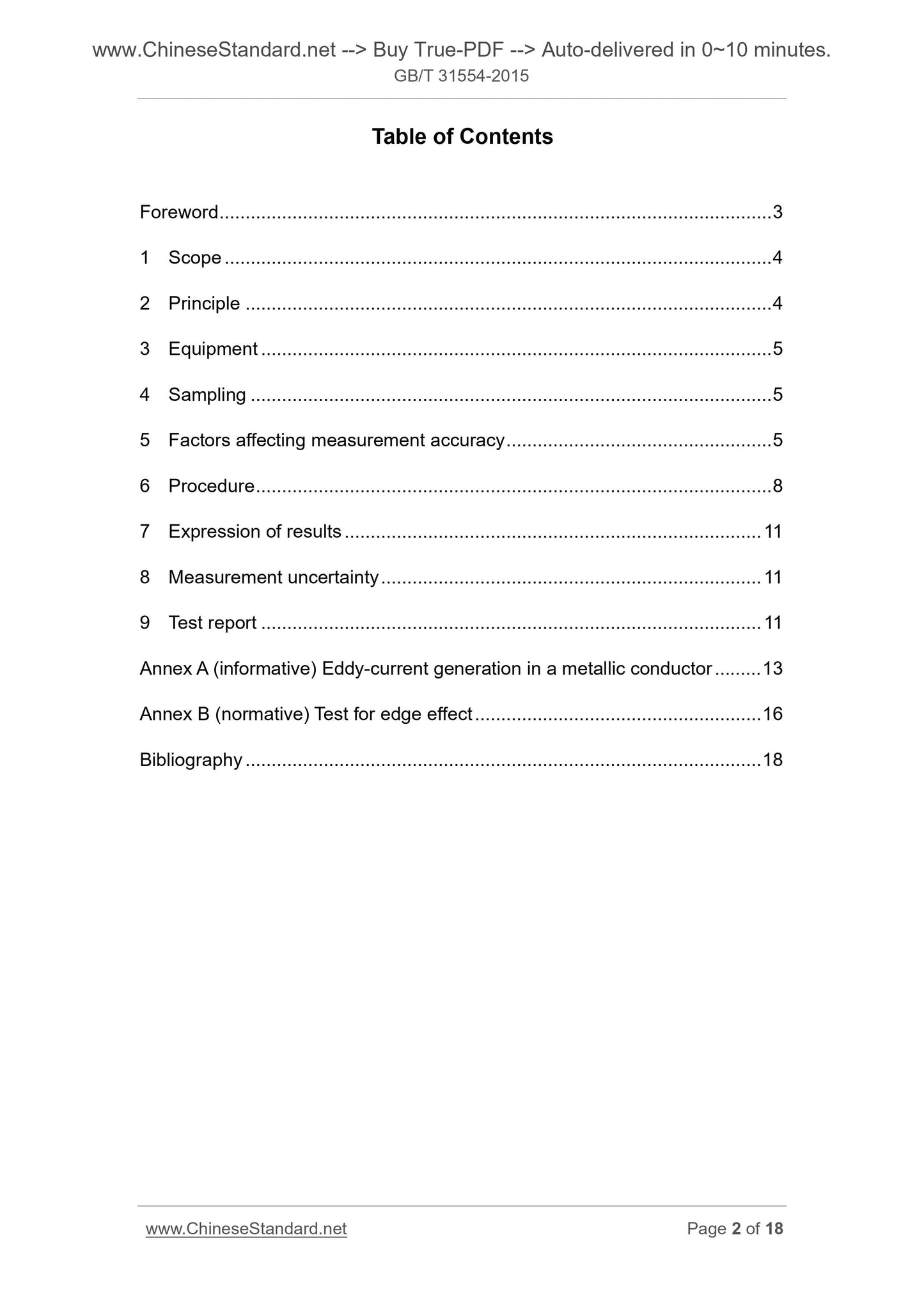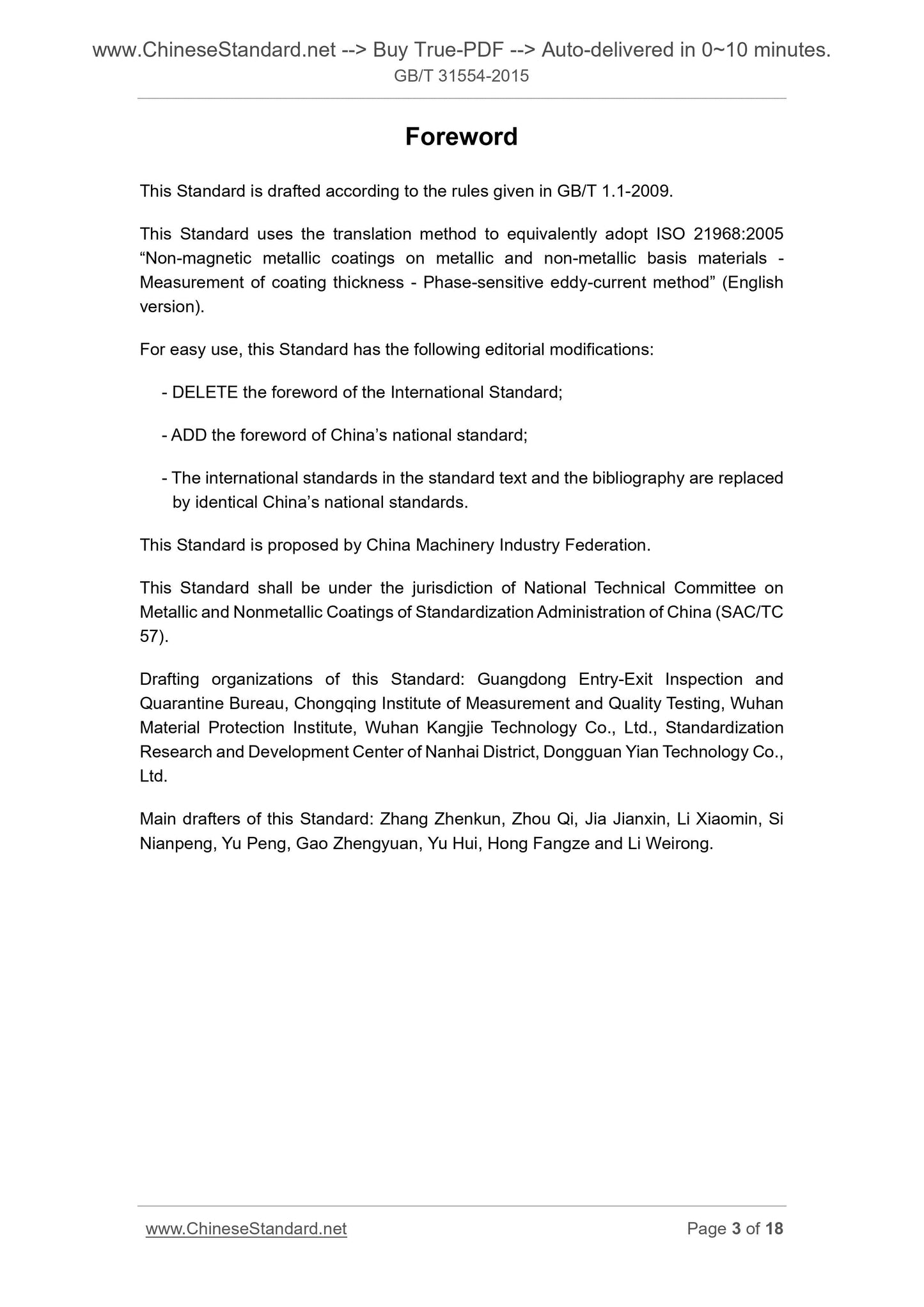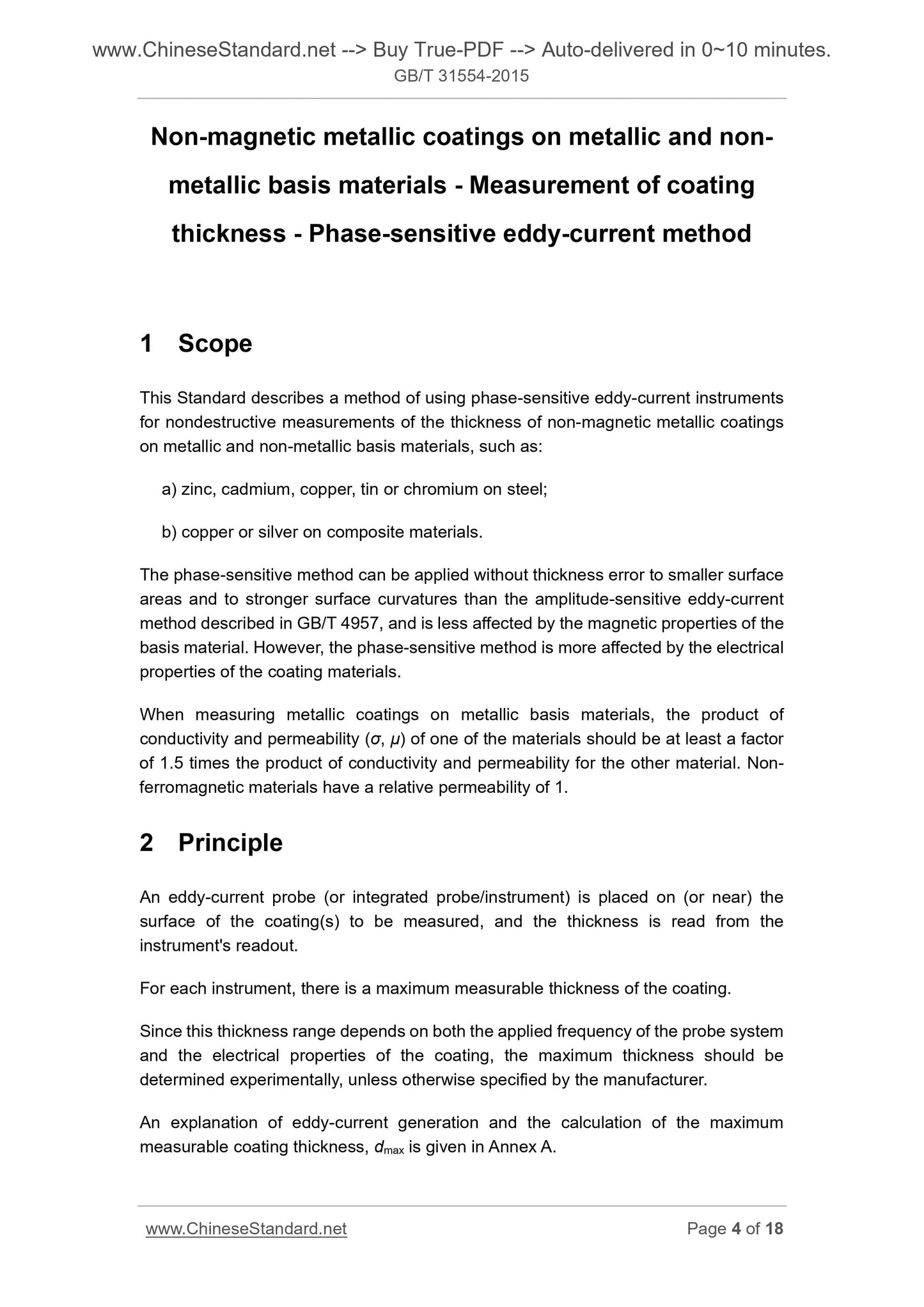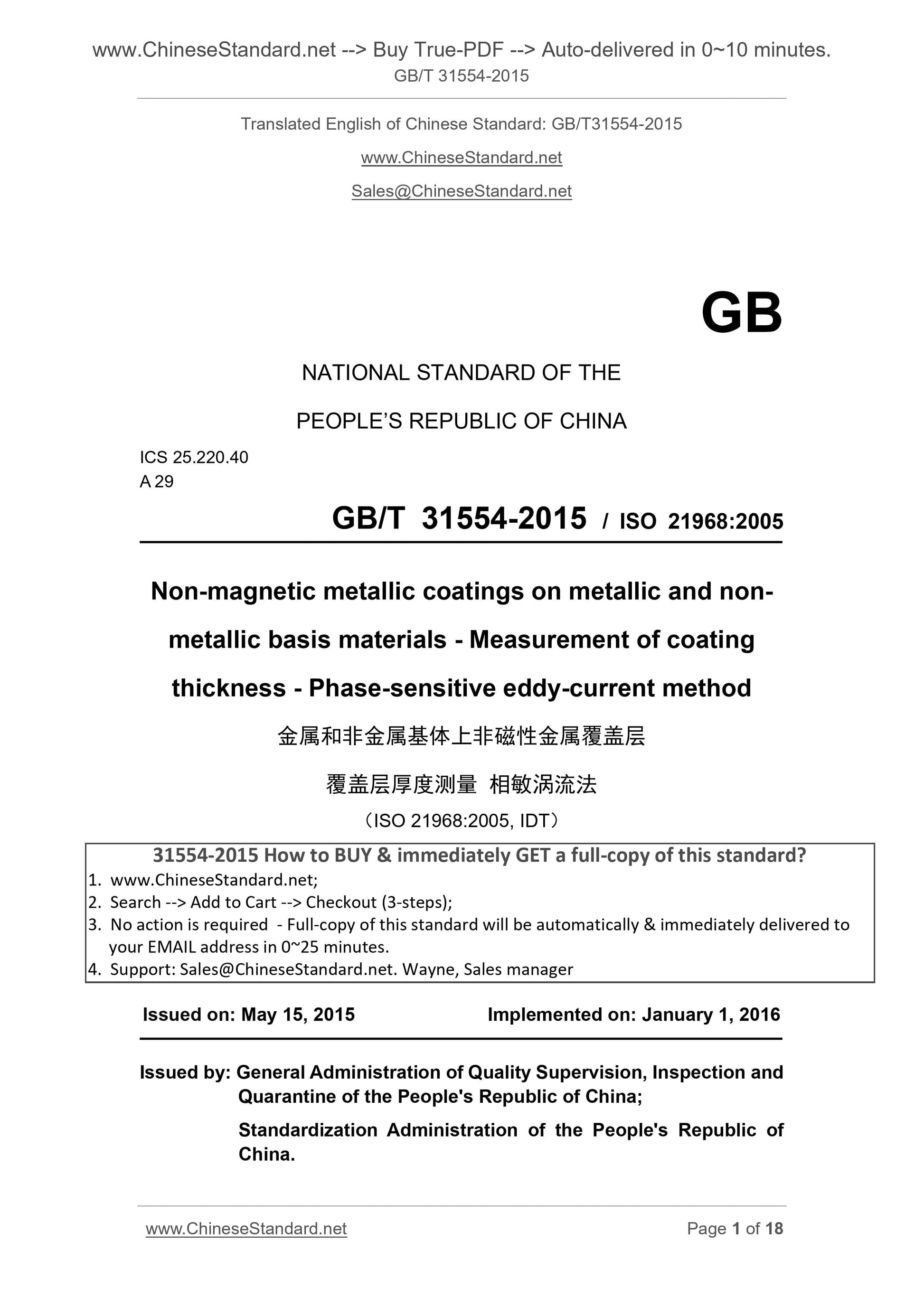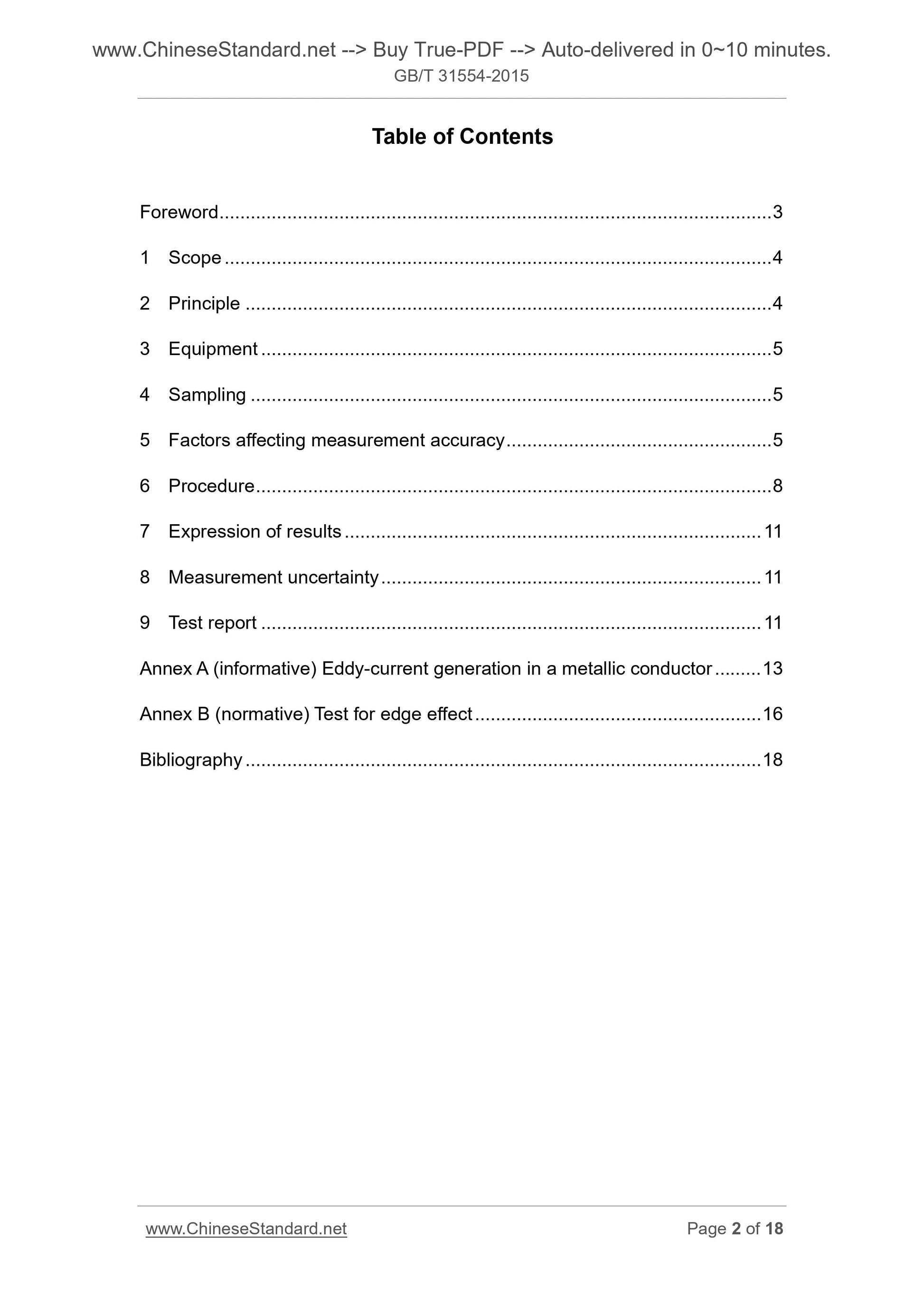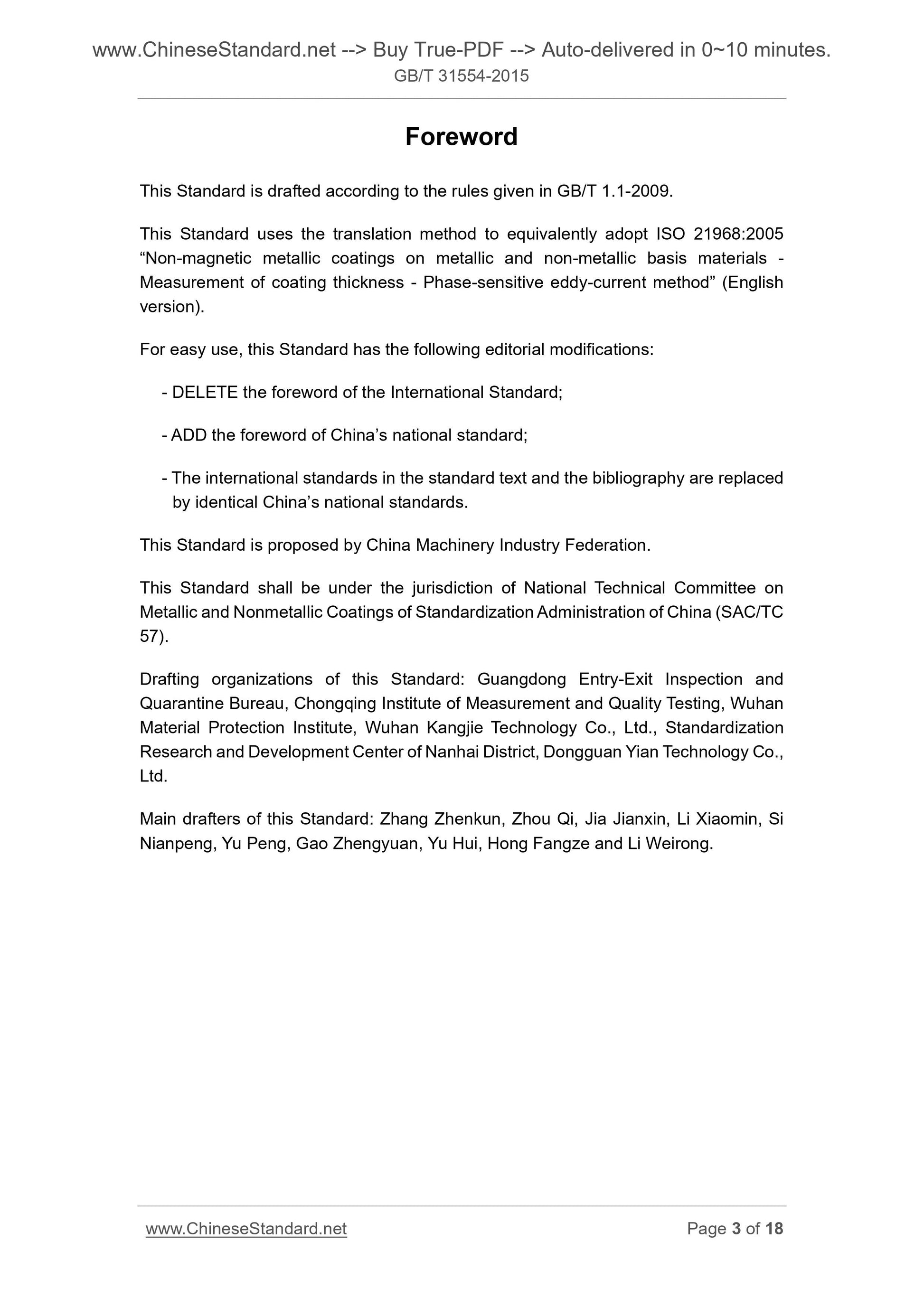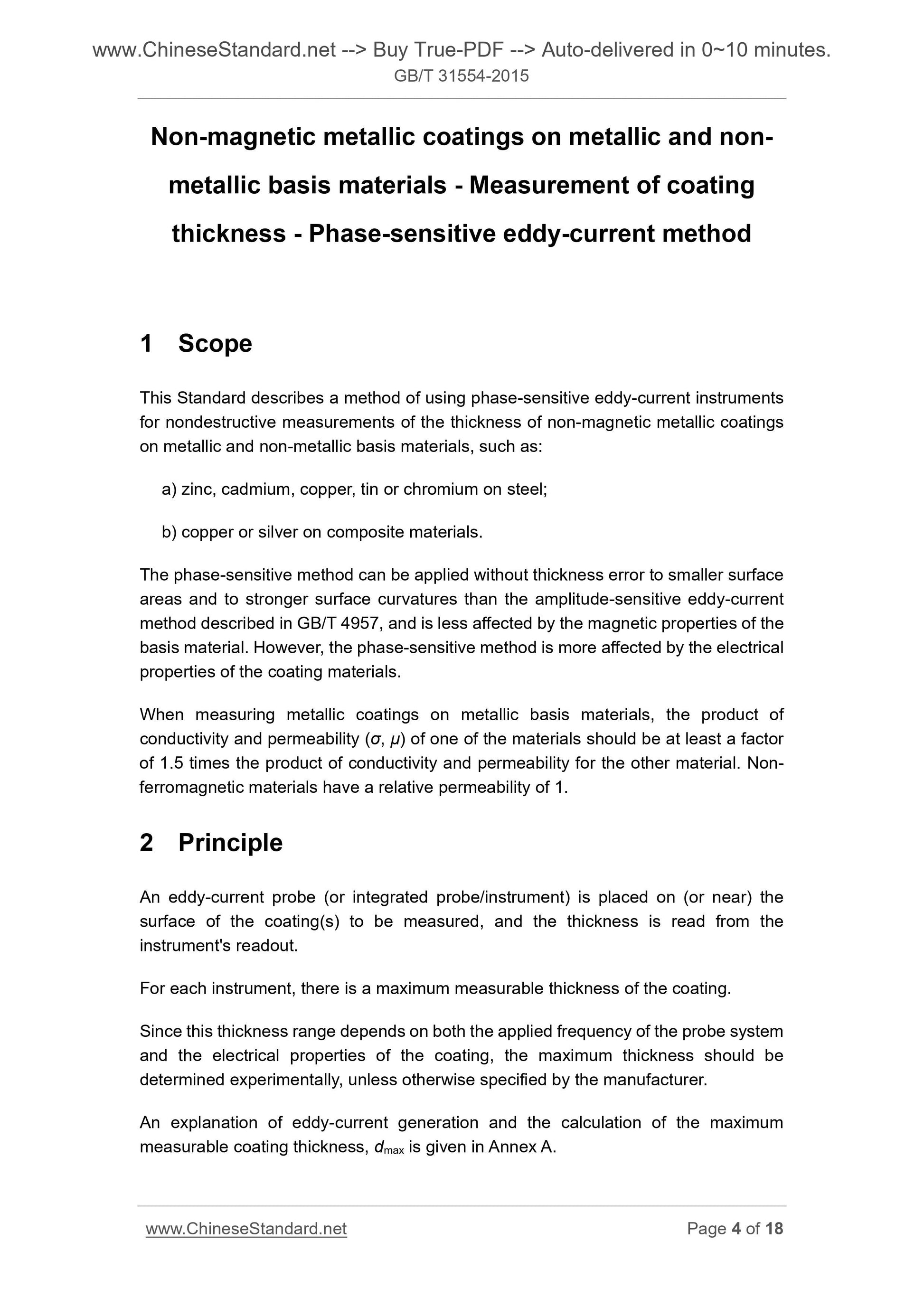1
/
of
4
www.ChineseStandard.us -- Field Test Asia Pte. Ltd.
GB/T 31554-2015 English PDF (GB/T31554-2015)
GB/T 31554-2015 English PDF (GB/T31554-2015)
Regular price
$130.00
Regular price
Sale price
$130.00
Unit price
/
per
Shipping calculated at checkout.
Couldn't load pickup availability
GB/T 31554-2015: Non-magnetic metallic coatings on metallic and non-metallic basis materials -- Measurement of coating thickness -- Phase-sensitive eddy-current method
Delivery: 9 seconds. Download (and Email) true-PDF + Invoice.Get Quotation: Click GB/T 31554-2015 (Self-service in 1-minute)
Newer / historical versions: GB/T 31554-2015
Preview True-PDF
Scope
This Standard describes a method of using phase-sensitive eddy-current instrumentsfor nondestructive measurements of the thickness of non-magnetic metallic coatings
on metallic and non-metallic basis materials, such as.
a) zinc, cadmium, copper, tin or chromium on steel;
b) copper or silver on composite materials.
The phase-sensitive method can be applied without thickness error to smaller surface
areas and to stronger surface curvatures than the amplitude-sensitive eddy-current
method described in GB/T 4957, and is less affected by the magnetic properties of the
basis material. However, the phase-sensitive method is more affected by the electrical
properties of the coating materials.
When measuring metallic coatings on metallic basis materials, the product of
conductivity and permeability (σ, μ) of one of the materials should be at least a factor
of 1.5 times the product of conductivity and permeability for the other material. Non-
ferromagnetic materials have a relative permeability of 1.
Basic Data
| Standard ID | GB/T 31554-2015 (GB/T31554-2015) |
| Description (Translated English) | Non-magnetic metallic coatings on metallic and non-metallic basis materials -- Measurement of coating thickness -- Phase-sensitive eddy-current method |
| Sector / Industry | National Standard (Recommended) |
| Classification of Chinese Standard | A29 |
| Classification of International Standard | 25.220.40 |
| Word Count Estimation | 13,137 |
| Date of Issue | 2015-05-15 |
| Date of Implementation | 2016-01-01 |
| Adopted Standard | ISO 21963-2005, IDT |
| Regulation (derived from) | National Standard Announcement 2015 No. 15 |
| Issuing agency(ies) | General Administration of Quality Supervision, Inspection and Quarantine of the People's Republic of China, Standardization Administration of the People's Republic of China |
| Summary | This Standard specifies the use of phase-sensitive eddy current non-destructive measurement of thickness of metal and non-metallic substrates nonmagnetic metallic coating thickness of methods, such as; a) on a steel substrate zinc, cadmium, copper, tin or chrome. on copper or silver b) composite substrate. Compared with GB/T 4957 �� Min eddy current method, phase-sensitive eddy current method for coating smaller and larger surface curvature of the surface without thickness measurement error, while the smaller substrate by magnetic influence, but the phase-sensitive eddy current method by overburden material IMPACT greater electrical properties. Metallic coatings on metal substrates measuring A material products (such as base material) conductivity and permeability should be at least another material (such as cover material) 1.5 times the conductivity and permeability. Relative permeability of non-ferromagnetic material is 1. |
Share
